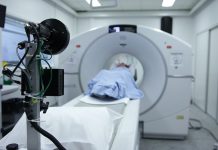Serious harm may result from only one terrifying incident, such as a vehicle crash, a slip and fall, or a sports injury. Microtrauma, which occurs when an injury is small but persistent, may also cause pain from repeated movements.
Pain in the tendons that join at the elbow might be caused, for instance, by repeatedly flexing and extending the forearm, which can be a component of both leisure activities and industrial jobs. There are two types of pain: acute, which comes on abruptly, and chronic, which lingers for a long period. Although you may feel immediate pain after an acute injury, you may find that the pain becomes chronic as time goes on. To help you find some relief, here is a comprehensive guide on how to fix pain after suffering an injury.

Joint injections
Inflammation may persist for an extended period after a joint injury. Injections into aching joints may reduce swelling and discomfort, paving the way for faster recovery. Two medications are included in the injections.
One option is an anesthetic, which provides immediate pain relief. Another is an anti-inflammatory steroid. The effects of joint injections often last for a few months, which should be more than enough time for the damage to properly recover. You may need to inject your joints again once or twice if the discomfort doesn’t go away. Nevertheless, tendon injury might occur with repeated injections.
Chiropractors
Chiropractic is a branch of medicine that focuses on spinal manipulation and other postural issues. To alleviate pain, enhance function, and promote the body’s natural healing process, chiropractors use adjustments to the patient’s spinal alignment. For those who choose non-pharmaceutical pain relief, chiropractic care, as offered at Georgia Injury Center, is an increasingly popular choice. Chiropractors are medical doctors who focus on restoring normal joint alignment and function as well as the diagnosis and treatment of ailments that affect the musculoskeletal system. In addition to relieving this kind of pain, many patients report relief from headaches, gastrointestinal issues, and stress.
Bracing
The purpose of bracing is to support the injured area, limit its range of motion, or render it immobile completely. Doing so allows the injured area to relax and recover. The amount of time you need to wear the brace will depend on the injury’s location and severity. Your bracing needs can be reduced as your injury heals, and eventually, you can remove it completely.
Physical therapy
Muscle atrophy can occur if you don’t use the injured body part, even though rest and activity modification are sometimes a must for injury repair. This leaves you vulnerable to more harm. You may regain the strength and flexibility you had before your injury thanks to physical therapy. Transcutaneous electrical nerve stimulation and iontophoresis are two physiotherapy ways that can aid in pain alleviation.
Pain medicines
Analgesics are a common kind of medication that many people use from time to time. For moderate to severe pain, paracetamol is usually the first line of defense. Aspirin can be used for temporary relief from fever and mild to moderate discomfort, including period pain or headache. For extreme pain, doctors may prescribe opioid medications like morphine.
You can also use NSAIDs or over-the-counter pain medications to alleviate your symptoms and supplement other treatment options, while analgesics can be used for muscular spasms. Use sedatives if the pain is keeping you from getting a good night’s rest. However, be careful when using these painkillers because of the potential side effects. Consult your doctor and use them exactly as prescribed.
Massage
Many accident victims get massages as a form of treatment. The practice of applying pressure, rubbing, or otherwise manipulating the skin, muscles, or ligaments is collectively known as massage.
A physical therapist may provide a variety of massage styles, such as Swedish and deep tissue. Your present physical state and the intensity of your discomfort will determine the specific kind of massage that is prescribed to you. After an injury, massage treatment helps alleviate aches and pains, stress, and swelling in the muscles.
Massage treatment has the advantage of being easy to conduct and requiring little in the way of prior preparation. After assessing your primary pain regions, your massage therapist will be able to recommend the best treatment method.
Ice and heat therapy
Ice and heat have definitely stood the test of time. To enhance blood flow, decrease swelling, alleviate pain, and provide a relaxing effect to the painful region, your therapist can use heat from a heating bag, a heat lamp, or anything else that dilates your blood vessels. A towel-wrapped ice pack is another convenient way to apply cold to the skin. Your muscles and body should feel less tense and more relieved after this treatment.
Exercise
Another way to treat pain after an injury is exercise, which can also help with inflammation and mobility. Due to the wide variety of exercise options, it is important to consult with your physical therapist who can assess your present health and provide guidance on the best steps to take. Many people choose to do stretching exercises as they help reduce tension and stiffness in the muscles. Physical activities that increase cardiovascular health, including swimming and walking, may also help alleviate discomfort.
Ultrasound therapy
Because of its usefulness in reducing pain, ultrasound treatment has become very popular recently. Findings from recent studies support the use of this kind of therapy, with more than 75% satisfied patients. Ultrasound therapy involves the use of high-frequency sound waves to identify and treat musculoskeletal disorders, such as muscular injuries and discomfort. If those injuries are followed by excruciating pain, your therapist will most likely suggest an ultrasound. After this treatment, you should expect to feel a reduction in muscular tension and, more significantly, your therapist will have a better idea of where your pain is coming from.
Injuries from various accidents affect between 20 and 50 million people every year. Your doctor may prescribe physical therapy if you or someone you know experience discomfort because of injuries sustained in accidents, whether they be on the job, in traffic, or as a result of a slip and fall. In addition to alleviating discomfort, post-accident treatment can shorten the healing process and get you back to full health faster.













